|
Location Melbourne Equipment Zoom H4N H2a XRL Well this turned out to be a disappointing experiment. I have been thinking about doing a lot more recording with the hydrophone as I have captured some great material and want to continue to see what interesting results I can come up with recording under water. I decided to see if I could capture the sounds of ice cracking as it froze and melted so I placed the hydrophone into a plastic container, filled it with water and put it in the fridge. I attached the H4N to the mains power supply so it could run without fear of battery failure and left it on all night. 5 hours worth of recording later I an have nothing at all except the background hum of the refrigerator. Ok, so maybe ice doesn’t make much noise while its freezing, but I thought at least it would crackle and snap as it thawed out. So the following night I took the whole lot out of the freezer and left it to melt, again with the recorder running. Sadly I recorded another 5 hours of absolutely nothing. I was disappointed, but more than that I was very surprised, I really thought there would be some sound generated as the ice melted. I am going to do some more tests on this, but so far it has been a bit of a failure. On a more positive note I did record a train today. There is a major freight terminal not far from where we live and some pretty big freight trains head out across the creak at the edge of the terminal. This means they spend several minutes clunking across the old metal bridge which makes a great sound. Anna and I were going for a walk as one went past so I got out the Zoom H4N which I was carrying and got some material. The sound these things make is pretty impressive and I want to find out if there is a regular schedule for them so I can bring down all my gear and do a proper recording session. Placing some mics right on the edge of the bridge would get some awesome sounds as these trains can be really heavy. For today I got a good short sample that I will use as motivation to get more.
0 Comments
Location Melbourne Equipment Dell Inspiron 9400 laptop I am continuing the process of creating some more sounds through manipulating recorded material. I have been getting some excellent and surprising results from stretching the sound files. In some cases I am using extreme stretch functions to create new sounds and the results have been a lot of fun. Most of the resulting sounds have a ghostly quality to them, and many of them would be very useful for science fiction or fantasy type sound effects. The most surprising result was a series of sounds that sound very much like whale song, but with a metallic quality, so I named them all Cyber whale calls. I’m sure they will be very useful for all those people who need the sound for a cybernetic whale singing. I still want to add more melee weapon sounding effects and a new task for next week is to try and create sounds for magic and spell effects, I have never created anything of this nature so it will be a good challenge for the week. Location
Melbourne Update Back to Melbourne and back to work for the new year. I have now set myself a firm deadline on the website. For various reasons I have very good motivation to get everything finalised and up and running. It has been a lot of work so far but January is going to be even worse as I try to get it all finished. I plan on having the entire website including the fully functioning sound library launched before the end of February 2010. There is still a lot of work to go and I have a variety of other things I need to get done this month as well, so January is going to be a busy month. I hope it all comes together so that I can finally launch Sound Library and make it available to everyone. Location Melbourne Equipment Zoom H4N Rode NTG3 Boom Pole Array I am not someone that believes in a higher being, but if I did I would be seriously tempted to believe that this year has been put in front of me to test my patience, and I am not sure I am passing the test. I have had today on my calendar for about 8 months from the time when I found out there would be a large display of vintage cars and trucks at the race track in the town I grew up in. I never really expected to record a lot of sound at a big event like this, but I thought it would be a good chance to make some contacts and maybe get a few sounds. What we got was the highest rainfall for November in 5 years; this was 2 days after we recorded the hottest day on record for November and only a week before summer starts. Trying to hold my recording gear and an umbrella and take notes while I talked to people became a big challenge and everything ended up being soaked. I guess I shouldn’t complain too much as I did get some good information and contacts and I did manage to record a few things, but it was so miserable, and wet and cold that it made it really hard to consider anything positive about the day. This was the first time for me using my new Rode NTG3 which I purchased last week. I didn’t even notice how it was going and forget I had installed it in the blimp cover until later in the day because I was so busy just trying to keep myself and the gear dry. I have not gone through the material yet so I have no idea how it coped with the day or how good it was. Keep an eye out for information about the NTG3 in the next few posts. On the information side of things I have found out about a steam engine club in Melbourne that meet monthly and have their final meeting of the year next Sunday. I might try and get along to that one. Apparently they have a large selection of old steam and traction engines and plenty of things that make interesting noises which is exactly what I am after. I also grabbed the information for a few of the car and truck clubs and I plan to contact them and see if anyone would be interested in me recording their vehicle and doing a feature on it. Because recording a vehicle is such a big task to do properly I plan to do some feature articles on some of the more interesting vehicles. I spoke to some gentlemen from the military vehicles club and found out about a meeting in early December that I am going to try and get access to. Basically it’s a day spent driving tanks around a large property. If I can get permission to record at this event I am going to be very happy indeed. There where two tanks there on Sunday, but the awful weather meant they never got unloaded from their trucks. Hopefully the next meeting will be better. What I did manage to record were a couple of nice old cars. The first one was a old Chevrolet lorry made in 1912. It was rusty and the wood was unpainted, but it ran alright and the engine sounded pretty healthy. The owner very kindly took me for a drive around the display area, so I got both idling and driving material as well as the old horn honking. It sounded so much more interesting than more modern cars. The cabin rattles and clunked because all the wood was starting to rot and the instruments mostly didn’t work. I was amazed at how well the engine was running considering the state of the rest of it. The owner must have done an excellent job of fixing it up. The second really old vehicle was a Thorneycroft lorry from about the same era. This one however had been beautifully resorted to almost pristine condition. I only captured it idling but it was still a great sound. Another interesting truck was an old Mazda flat tray, but it only had one wheel at the front. It was designed to navigate narrow streets in Japan, and having lived there for a few years I can totally understand the concept behind it. Its sound was not that unusual for a vehicle of its time, but it was still good to capture some material from it. I guess this one was more interesting to look at than to listen to. Another guy had restored an old engine and built it into a mini tractor for his kids to ride on. It was sitting on a trailer for the day, but he kindly started it up for me. It was an old “hit and miss” engine that popped and clunked away and had an awesome sound. The tractor itself was very basic but looked like it would be great fun for his kids. Through all of this I needed to be aware of keeping my gear dry as much as possible, but it was very difficult to get into the best position to record things while juggling the boom pole and an umbrella, so often I would just put up with being wet when it was only raining lightly. The blimp cover actually does a very good job of protecting the mic inside from the rain as its fluffy cover stops most of the rain from getting through. You just need to be really careful to dry it our thoroughly afterwards. The Zoom H4N was another matter as I needed to keep it angled out of the rain and constantly wipe off any water than got onto it so it would leak inside and damage the actual circuits. Initially I was trying to keep myself dry as well, but this soon became pretty much impossible, so I just put up with being cold and wet. Not the best of days, but definitely not the worst.
Website http://www.hcvc.com.au/J1/ Location Melbourne Equipment Zoom H4N Internal mics Just a quick one on the way to work today. Some construction on one of the roads near Southern Cross station. There is an overpass I walk over almost evry day and they had a large machine driving concrete pylons into the ground. The overpass meant I was quite close so I used the H4N with my new wind cover to record some good material. Anna bought me a purpose built wind cover for the H4N’s built in mics. Its quite good and means I don’t have an oversized cover that falls off and looks silly. This one attaches properly to the mics and come4s in different colours. I write up a review for it soon. Location Melbourne Equipment Zoom H4N DPA 4061 pair The main test for the DPA mics was to see how they coped with high power levels like engine exhausts and machinery. The main reason I have been considering acquiring these mics is because their small size and high power level capacity make them excellent for recording cars, bikes, planes etc. The first test today was to attach them to a motorbike and see how they handled it. One of the guys I worked with has a Honda CBR 600 which was a perfect subject for what I needed. I attached the first mic to one of the rear indicators about two inches from the exhaust. (The CBR has a single central exhaust that comes out from under the seat.) I really wanted to push these mics and see what they could handle. Even though I wanted to capture some bike samples I was happy to risk not getting anything useful to see just how good these were. The second mic I attached to one of the front indicators. The weather was pretty bad on the day so I didn’t have the luxury to really work out a good location for the front mic. Considering this was mainly a test I was more interested in how the mic coped rather than positioning it perfectly. The leads for both mics were taped down with basic electrical tape and attached to the H4N which I placed a backpack which the rider wore while riding. I then sat and read a book while my friend went for a ride. The results were better than I had hoped for. The rear mic captured pure exhaust output with no tyre sound and no unwanted sounds from anything else. The front mic was slightly less perfect. It captured excellent samples, but even with a foam cover and a Rycote fluffy wind jammer it still picked up some wind noise. I think this was largely due to its positioning. The fairing on the front of the bike was deflecting the wind past the bike, but I think it was directing it straight over the mic. It was a good lesson for the future, next time I will place the mic closer to the engine itself. Both mics however captured excellent samples and proved they could do what I needed them to. The second test for the day was to rerecord my friends Nissan 350Z. He has had some new exhausts installed and was quite keen to get me to record it with the new sounds. Last time the biggest issue I had was mounting mics on the car itself. The beauty of the mics I was using is that they are so small I can pretty much tap them to anything. I mounted one near the exhaust and one under the bonnet. Another issue was that the 350Z is such a smooth design that there is nothing past the exhaust and no way to attach anything near its output, so the mic itself was about three inches back from the end of the exhaust. Again the results were pretty good. The mics did what I needed them to, any issues with the material captured was from placement. I think the DPAs have proven that they can do what I need of them, so I plan on ordering a couple. The next step will be to get access to a car I can spend some time on. The make and model is not the issue, its having the time to try a range of mic positions and see what different results I can get. Whenever I have someone help me out by offering their car or bike or nuclear powered tractor to record I always feel awkward if I take too long. Setting up mics correctly and finding the best position can sometimes be very time consuming. The more time I spend on my own finding the best method and mic placements for recording a car generally, the less of someone else’s time I will take up when I get the opportunity to record something new. This won’t always work, cars come in lots of different shapes and sizes, but I should be able to at least come up with some basic guidelines for car recording session. It might be worth putting some of these into a tutorial once I have some good general concepts. I’m travelling to Adelaide in a couple of weeks, I might spend a day recording the hire car in different ways and see what I can come up with.
Location
Docklands Equipment Zoom H4N DPA 4061 pair Today I finally got the chance to test out some new mics I have been thinking about buying. I have heard lots of good reports about DPA mics but I have never used any. They are pretty expensive so I thought it would be a good idea to hire some to test out before I bought any. I found a place nice a close to home that rents out audio equipment and hired a pair for a couple of days to test. Today was literally just testing them out to see what they could do. I did a range of test recordings of speaking and measuring sound levels and comparative signals from foreground to background sounds. I also managed to record a few things I have had lying around waiting to be recorded. I’ll write up a proper review of them soon, but I have to say I fell in love with these mics pretty quickly. They are very sensitive, and have a beautiful crispness to the sound, but at the same time they can cope with extremely loud sound levels. The mics themselves are smaller than my little fingernail, and as such I need to be careful with them, but they also allow me to use microphones in locations that have previously been impossible. Tomorrow I plan on strapping them to a motorbike and a sports car to see just what they can handle. That will be the real test to see if they are worth purchasing. Location Williamstown Equipment Zoom H4N AKG D112 Sennhieser MKH60 Single hand setup Commissioned 17th June 1942 The HMAS Castlemain was a Bathurst class minesweeper for the Royal Australian Navy during World War 2. She now resides as a permanent floating museum on Williamstown pier with a great view of Melbourne city from her rear decks. Today I am going to record everything that bumps and squeaks on an old warship. Sadly none of the weapons work anymore because everyone likes a good loud bang, but there are quite a few interesting sounds to be captured from this old warship. I have adopted the same recording setup as I used at the children’s farm a few weeks back. It is fairly practical for having everything setup in one hand, although it can get a little heavy after a while. I have the H4N strapped to the side of the blimp cover for the MKH60 and the D112 also attached to the blimp cover pistol grip. I need something I can move easily with as I will be climbing up and down stairs between decks and warships don’t traditionally have a lot of room to move. Some of the stairs are going to be enough of a challenge as it is with only one hand free. I started by moving around the ship recording the more straightforward elements. Doors, hatches, and switches all made fairly unique sounds compared to their modern day variants. The museum also an interesting variety of ships bells including one from a Japanese ship. I recorded several rings of all of these. The weather wasn’t great today, but I spent most of the time below deck so it wasn’t too much of an issue. Some of the hatches had multiple clamps to seal them and they made nice clunky sounds. Things started to get interesting when they offered to start up the engines for me. Traditionally the Castlemaine was steam powered via giant boilers. These days they have a modern compressor in one of the deck houses that provides pressure to drive the main pistons, but they can only run at a low speed. The pistons themselves were actually not as loud as I was expecting. Being powered by steam pressure and being very well maintained they moved smoothly and quietly. The Castlemaine also has a range of different pumping engines to circulate the water around the ship, run the water purifier (steam engines need distilled water) and maintain things like ballast and other systems. I was very lucky to have all of these started up for me to record. They all made different sounds depending on their purpose. They also started up the diesel engine for me. One of the diesels was used to generate a current that was directed through a network of wires trailing behind the ship. The current in these wires would trigger certain types of mines in the water. As a final treat they activated the ships siren for me. This was a steam driven horn used as a fog horn or to indicate actions in port. Overall I got some really good material as well as a good lesson on Australian Navel history form some of the guys working on the ship on the day. Website http://hmascastlemaine.com/ Location Collingwood Children’s Farm Equipment Zoom H4N Shure Beta 58A Sennheiser MKH60 Jury rigged set-up I got to spend this morning in the studio with my brother Paul. He is over from London to record a new album with some people in Melbourne. It was very interesting listening to the process. He has recently switched his focus to heavy metal music and believes that some of the highest standards in recording are to be found in the genre. I have never really liked metal music, but Paul's approach was very interesting and I learnt some good mastering processes by watching the session. I can’t wait to hear the album when it’s finished. It was a good thing to spend the morning indoors as apparently it poured with rain all morning. By the time we came out at lunchtime it had cleared, and I thought I might actually be able to get some recording done. I walked from the studio in Richmond down to the Collingwood Children’s Farm. The farm is a small area of land in Melbourne’s inner city area on the Yarra River. It’s a great escape from all the noise and overcrowding of the city, they even have a cool outdoor café there. I had visited the farm a few years ago and recorded some ducks and geese. The recordings weren’t great and I think the main reason back then was a lack of patience on my part. Also Spring is a much better time to visit any location for animal recordings. I have been fiddling around with various ways of holding the H4N and a couple of microphones, and I have yet to come up with something I really like. While at the farm I jury rigged a set-up that wasn’t too bad. After walking around for a while holding the mics and H4N separately I realised it really wasn’t practical as the cable movement was being transferred directly to the microphones, so I was getting lots of unwanted noise. I had tried to make a handle with threaded rods protruding that I could screw microphone clips to. I realised that with the Rode blimp cover I already had a handle, and it also had a threaded slot to screw onto a mic stand. So I used a small length of the threaded rod and attached it to the bottom of the pistol grip and then attached a regular mic clip. This allowed me to hold both the blimp array and a second mic. I then used Velcro tape to attach the H4N to the side of the Blimp cover. I did look somewhat like a Buck Rogers blaster, but it removed the nose from the cable movement, and allowed me to carry everything in one had which was much more convenient. I will try to make this set-up more organised, but I think it might work. There were a lot of young animals on the farm, and being mid week, there were not too many people around either. My first success was a single duck. A white Peking duck decided to go for a wander by itself and proudly announce its presence to everyone by quacking. He was not bothered by me following him, so I managed to get some nice clean isolated samples. After this I tried to get the goats to make sound, but they seemed far to happy to play and lie in the sun, and even when they were taken into the stables later to be fed and rested they did so almost completely silently. There was one goat left outside that did make a little noise at being left behind, but overall today was not a day for goats. The pigs were also a little allusive. They had been placed in an isolated pen away from human contact because of the current issues with swine flu. This was done for the sake of the pigs rather than the sake of people. I did get a few sounds from some of the piglets as they tried very persistently to feed from their mother, but they were too far away to get a good clean recording. If I had had the boom pole it might have helped me get the mic closer, but one of the big decisions I have to make each time I go out is what equipment to take and what to leave behind. As I was going to be walking all day today I decided to leave the pole behind. There is never a perfect solution for every contingency unfortunately. There was a single calf in a paddock who initially was very reluctant to make any sound, although he was very enthusiastic about licking the blimp cover. I think the furry material made him very curious. As the day progressed he did call out a few times and I managed to capture a few samples. One of the biggest difficulties for me was the desire to respond to any sound I heard by running over and trying to record it, but animals are very unpredictable, and I decided it was better for me to finish one thing before moving on to the next, otherwise I would spend the entire day running around in circles arriving just as something finished making sounds. So I waited patiently in each area until I got some material, or at least had given it a good amount of time before I moved on. The farm was small enough that I was able to do two or three circuits and make several attempts to capture sounds. Ricky the calf was far noisier as the day progressed than he was earlier on. The sheep were also conveniently noisy when one of the farm staff let them out of their paddock to feed in the lane way. This allowed me to grab some really good recordings, but also allowed me to get near the pigeons in the paddock. I have been wanting for sometime to capture the sound of a flock of pigeons taking off as they have a very distinctive sound of their wings as they take off. The main issue is that most areas where pigeons congregate are in city areas with people and traffic, so it was always going to be noisy. Here I had a nice quiet paddock away from everything with about 30 pigeons all eating. I captured a few minutes of them cooing as they ate, and then simply by taking a few steps forward they all launched into the air giving me a clean recording. Once I stepped back they all returned to eating. I wish all animal recordings were this easy. The recording setup I was using seemed to be working quite well. I had set the input levels to maximize each mic and capture a good range of sounds. The Shure Beta 58A only really worked well at close range, but when I did get the chance to get in close it captured a good clean recording with almost no background sounds. This was really good when all the Chinese Silky chicken roosters decided it was time to crow. There were 4 different male chickens who all very politely took it in turns to call to each other and respond. The result was some beautiful clichéd “cockadoodle do” sounds at various distances. These were captured on all the microphones clearly once I set the levels correctly. A rooster call is actually very loud when you are standing two feet away from the rooster. The geese were less cooperative. They insisted on calling as a choir, and while I managed to get a good recording of a group of geese as they wandered around, it would have been nice to capture one in isolation. The main issue with most animals is that, like humans, they make noise for the sake of communication. Many animals will make little or no noise unless there is another of their kind in range to hear it. Some animals once domesticated will call out to their humans when it is time to be fed or moved, but the very act of isolating an animal can seriously reduce the chances of it making noise. In some cases, like the roosters, the animal’s calls will be in a call and response pattern, and this makes it very easy to record each individual call, but often many animals travel as a group and call out as a group. This means you either need to be very lucky or incredibly patient to capture a single clean call. Today had been a very successful day so far, but just as I was thinking of leaving I had one final surprise. I had noticed there were several peacocks in one of the barns. They had been sitting up in the rafters and looked like they would be there for a while. By the time I was heading out at about 4pm, one of the peacocks had moved out of the barn and was hanging around the composting area. I heard a single cry from him as I was walking up from the sheep paddocks. This is why I often leave me gear in record mode. Since I have started using digital recording devices that use SD flash cards I am able to record several hours of material without stopping. I have found that often if I am in an area with lots of potential sound source it is worth leaving the recorders actively recording at all times, this way I can capture unexpected sounds. The peacock’s first cry was exactly that, and I got a good sample of a call from about 500 meters distance. As I approached the peacock I noticed he was going through the process of trying to impress the peahens in the area. He went through quite a few displays of feathers and little dances and also made a couple more loud calls. I was really happy to record the calls, but when he stared to dance to a female next to him, he did something I was not ever aware peacocks did. As part of his little dance the peacock opens his huge tail feathers, and then every now and then he makes them all shimmer as part of the dance. This is not only interesting to look at but produces a really interesting sound. The best part was that he was completely un-phased by me standing about 3 feet away from him so I managed to capture some really good recordings of this little dance step. I had set out today with the hope of recording a couple of animal sounds, and the expectations that I would probably only get a couple of chickens clucking and maybe a duck. It turned out to be one of the most productive sessions with animals I have ever had. Springtime is definitely the best time to capture animal sounds as they are much more active coming out of winter and going into breeding season. I think I will need to plan to be somewhere interesting each spring where I have access to new animals to record. I will also need to get better at waking up early in the morning as this is usually when many animals are most active.
Website www.farm.org.au/ Location Melbourne CBD Equipment Zoom H4N Shure Beta 58A Just one busker today. A guy playing Soprano Saxophone. He was sitting under a bridge near the Melbourne Arts Centre. The location added a nice reverb to everything. I am recording about 3 minutes of each busker I come across. As I mentioned last time I am not trying to capture complete songs, just to get a sample of ambience that includes a busker in the city environment. |
AuthorStephan Schütze has been recording sounds for over twenty years. This journal logs his thoughts and experiences Categories
All
Archives
April 2019
|
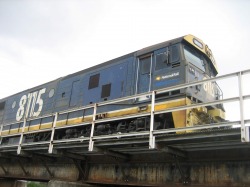
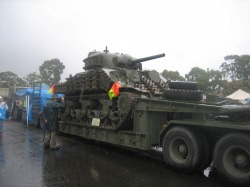
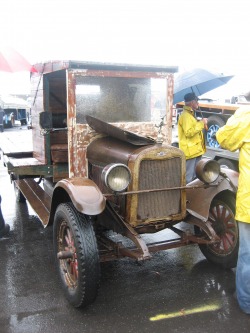
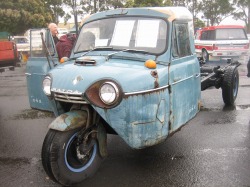
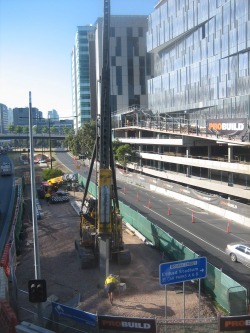
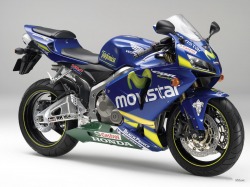
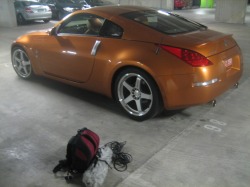
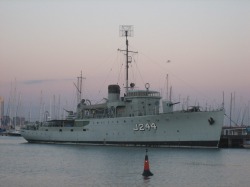
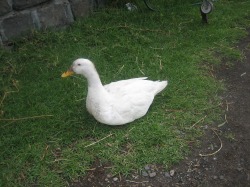
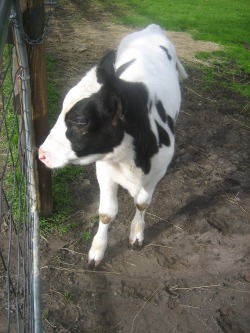
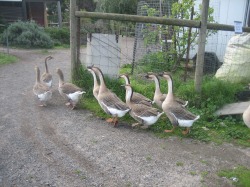
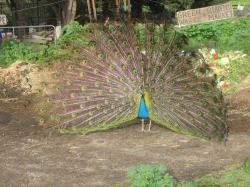
 RSS Feed
RSS Feed
